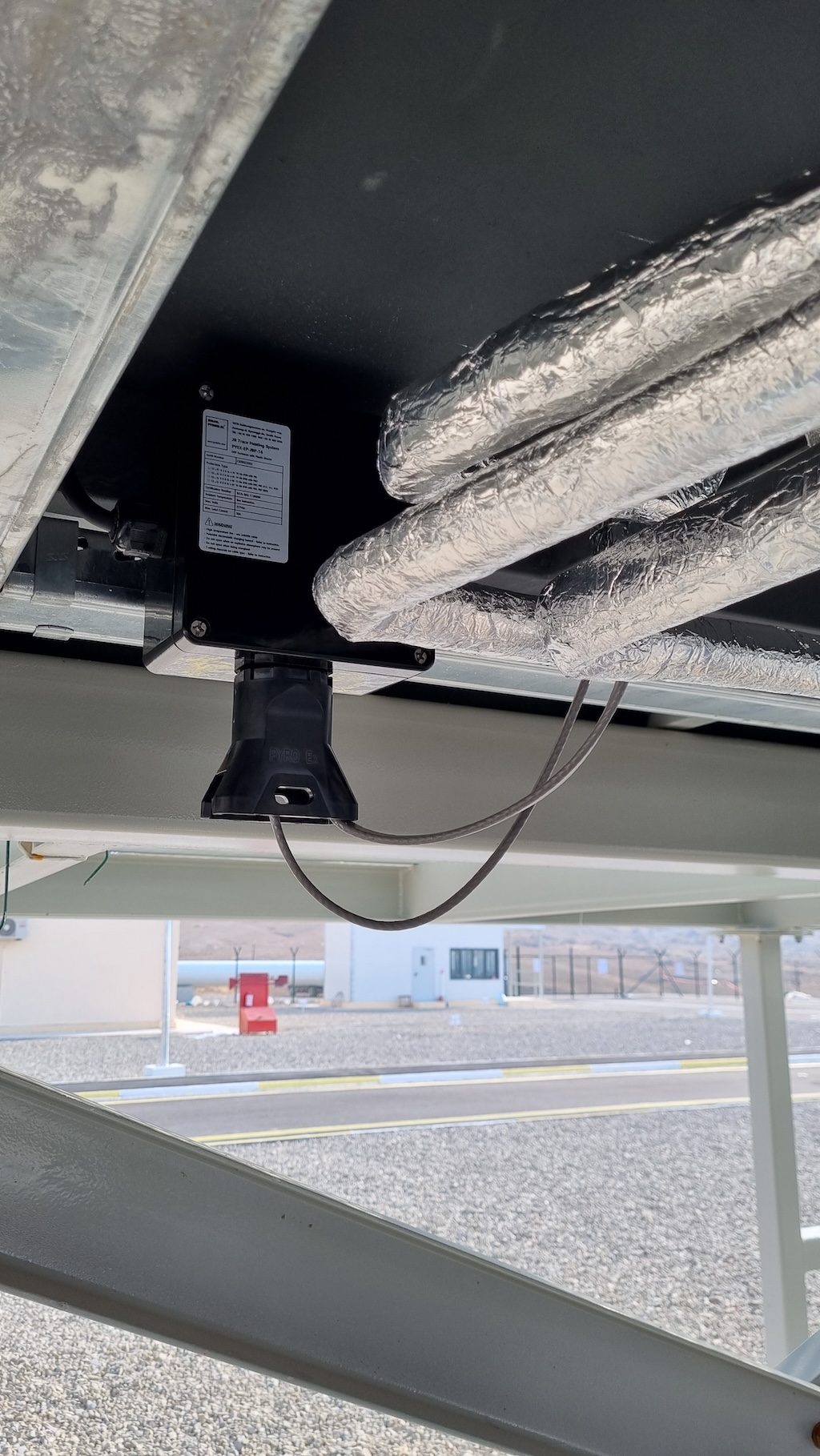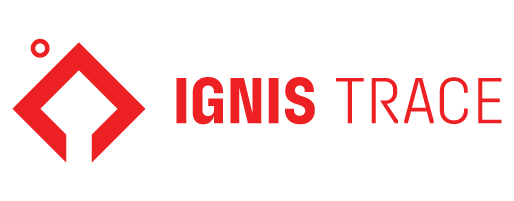- Home
- Heat Trace Services
- Industrial Temperature Maintenance
Industrial Temperature Maintenance
- Overview
- Pipes Freeze Protection
- Industrial Fire Safety Solutions
- Industrial Temperature Maintenance
- Snow & Ice Melting For Roofs And Gutters
- Tank and Silo Heating
- Ramp and Road Heating Systems
- Electric Under-Floor Heating
- Long Pipeline Heating
- Ex-Proof Electrical Equipment and Solutions
- Industrial Heated Insulation Jackets
- Fuel & Chemical Leak Detection Systems
- Heating Solutions For Open Sea And Arctic Shipping
- Tank Insulation
- Bunker Heating
- Industrial Immersion Heaters

Industrial temperature maintenance is a critical process in ensuring that various industrial systems and processes operate within specific temperature ranges. These processes often involve maintaining the appropriate temperatures to ensure the safe, efficient, and consistent functioning of machinery, equipment, and systems. By using advanced technologies, such as heat trace systems and heating cables, temperature maintenance solutions prevent problems like freezing, overheating, and corrosion in pipelines, tanks, and other industrial components.
This field of engineering is essential for industries where temperature control directly impacts the quality of production, safety standards, and the longevity of equipment. In sectors like petrochemical, food processing, and energy generation, maintaining optimal temperature is not just about performance—it's a matter of safety and regulatory compliance. Companies that specialize in this field provide tailored solutions to meet the unique needs of different industries, ensuring continuous operation even in harsh environments.
What is Industrial Temperature Maintenance?
Industrial temperature maintenance refers to the practice of regulating and controlling temperatures in various industrial settings to ensure that operations run smoothly and safely. This involves maintaining equipment, pipes, and storage systems at a constant, predetermined temperature. Temperature control is vital for preventing damage to equipment, ensuring product quality, and protecting workers in industries like chemical processing, energy production, and food manufacturing.
One of the most common methods used in temperature maintenance is the heat tracing system. These systems use specialized heating cables to keep pipes and other equipment from freezing or overheating, which can cause costly shutdowns or dangerous malfunctions. Without proper temperature regulation, industrial processes can experience disruptions, leading to delays and inefficiencies that affect productivity.
In addition to protecting equipment and ensuring operational efficiency, industrial temperature maintenance helps industries comply with strict safety and environmental regulations. This makes it a cornerstone of modern industrial operations, particularly in sectors where consistent temperature control is crucial for both safety and performance.
Industrial Temperature Maintenance Solutions
 Industrial temperature maintenance solutions are designed to ensure that critical processes and systems remain operational at the required temperatures. These solutions include a variety of technologies and approaches, tailored to meet the specific needs of different industries. By implementing temperature control systems, industries can avoid equipment failure, reduce energy costs, and ensure product quality.
Industrial temperature maintenance solutions are designed to ensure that critical processes and systems remain operational at the required temperatures. These solutions include a variety of technologies and approaches, tailored to meet the specific needs of different industries. By implementing temperature control systems, industries can avoid equipment failure, reduce energy costs, and ensure product quality.
One of the most widely used solutions is the application of heat trace systems. These systems rely on heating cables to regulate the temperature of pipes, tanks, and other equipment, preventing freezing or overheating. Heat tracing solutions are especially effective in environments where external weather conditions, such as extreme cold or heat, can disrupt operations.
Another essential solution is the integration of thermal monitoring and control systems, which allow operators to continuously monitor temperature levels and adjust heating as needed. These systems provide real-time data, enabling quick responses to potential issues. They also help industries maintain compliance with safety regulations by preventing temperature-related hazards.
Electric Heating Solutions
Electric heating systems form the backbone of many temperature maintenance solutions. These systems use heating cables to provide consistent heat to pipes, vessels, and storage tanks. Electric heating offers a precise and efficient way to maintain desired temperatures, especially in large-scale industrial settings. Additionally, electric heating solutions can be customized to fit specific operational needs, making them versatile and widely applicable across various sectors.
Thermal Monitoring and Control Systems
Thermal monitoring and control systems play a vital role in ensuring temperature consistency across industrial processes. These systems allow operators to track temperatures in real-time, making it easier to detect anomalies and adjust heating parameters. With automated controls, industries can optimize energy usage, reduce operational costs, and avoid potential downtime caused by temperature fluctuations.
High and Low Temperature Maintenance
Temperature maintenance solutions must address both high and low extremes, as industrial processes can be sensitive to drastic temperature changes. High-temperature maintenance ensures that equipment used in heat-intensive processes, such as chemical reactions or energy production, operates efficiently. On the other hand, low-temperature maintenance is crucial for preventing freezing in pipelines and storage tanks, particularly in colder climates. Both high and low-temperature solutions are critical to keeping systems functioning reliably year-round.
Uses of Industrial Temperature Maintenance
 Industrial temperature maintenance plays a crucial role across a wide range of industries. By maintaining optimal temperatures, these systems help ensure the safe and efficient operation of equipment, protect sensitive materials, and improve the overall reliability of industrial processes. From chemical plants to food production facilities, temperature control is essential for both safety and performance.
Industrial temperature maintenance plays a crucial role across a wide range of industries. By maintaining optimal temperatures, these systems help ensure the safe and efficient operation of equipment, protect sensitive materials, and improve the overall reliability of industrial processes. From chemical plants to food production facilities, temperature control is essential for both safety and performance.
In sectors such as chemical and petrochemical, food production, and water management, temperature maintenance is vital to avoid equipment failure, contamination, or process interruptions. The application of heat tracing and heating cables helps maintain consistent temperatures, enabling companies to meet regulatory standards, extend the life of equipment, and optimize energy use. Below are some of the key industries where industrial temperature maintenance is indispensable.
Chemical and Petrochemical Industry
In the chemical and petrochemical industries, maintaining the correct temperature is crucial for both safety and efficiency. Chemicals often need to be stored and transported at specific temperatures to prevent reactions, spoilage, or contamination. Heat trace systems are widely used to regulate temperatures in pipelines, tanks, and reactors, ensuring safe and controlled chemical processes.
Food Production and Processing
Temperature maintenance in the food production and processing industry is critical to ensure food safety and quality. From storage to processing, food items must be kept at specific temperatures to prevent spoilage or contamination. By using heating cables and advanced thermal monitoring systems, these facilities maintain strict temperature control, which is necessary for meeting hygiene and safety standards.
Water and Waste Water Management
In water and waste water management, temperature control is essential for preventing freezing and ensuring the smooth flow of liquids. Freezing pipes can cause significant disruptions, so heat trace systems are employed to keep water systems operational even in colder climates. This ensures that water treatment and distribution processes remain uninterrupted.
Energy and Power Generation
Energy and power generation industries rely heavily on temperature maintenance to keep turbines, pipelines, and other critical equipment functioning. heating cables and heat tracing systems are often used to prevent condensation, freezing, and overheating, particularly in cold environments. Temperature regulation ensures that power plants and energy facilities maintain optimal efficiency and avoid costly downtimes.
Advantages of Industrial Temperature Maintenance
Industrial temperature maintenance provides numerous benefits that contribute to the efficiency, safety, and longevity of industrial systems. Proper temperature regulation is essential not only for maintaining operational efficiency but also for ensuring the safety of equipment and personnel. By implementing heat trace systems and heating cables, industries can achieve significant advantages in terms of energy savings, equipment lifespan, and uninterrupted operations.
Temperature maintenance solutions are crucial for preventing costly breakdowns, reducing energy consumption, and ensuring compliance with safety standards. The benefits extend across various industries, from petrochemicals to food processing, where maintaining optimal temperature conditions is a necessity.
Extending Equipment Life
One of the key advantages of temperature maintenance is the extension of equipment life. By maintaining proper temperatures, systems avoid the wear and tear associated with thermal stress, freezing, or overheating. heating cables and heat trace systems help prevent damage to pipes, tanks, and machinery, reducing the need for frequent repairs or replacements. This not only saves costs but also extends the operational lifespan of critical equipment.
Ensuring Energy Efficiency
Industrial temperature maintenance systems also contribute to greater energy efficiency. By using heat trace solutions, industries can ensure that energy is used effectively, preventing the unnecessary loss of heat. This results in lower energy consumption and reduced operational costs. Furthermore, thermal control systems help optimize heating processes, ensuring that energy is directed precisely where it is needed, without wastage.
Safe and Continuous Operation
Safety is another major advantage of temperature maintenance systems. Ensuring consistent temperatures reduces the risk of equipment failure, which can lead to dangerous situations such as leaks, explosions, or contamination. heating cables and monitoring systems play a critical role in maintaining safe operating conditions, allowing industries to continue their processes without the risk of hazardous breakdowns. This also leads to uninterrupted production, minimizing the chances of costly downtime.
How to Perform Industrial Temperature Maintenance?
Performing industrial temperature maintenance involves several key steps that ensure the continuous operation of equipment at optimal temperatures. The process requires careful planning, system selection, and regular maintenance to prevent temperature-related issues. Properly managed temperature control systems not only increase operational efficiency but also reduce the risk of equipment failure and safety hazards. From selecting the right heat trace system to following regular maintenance schedules, each step plays a crucial role in achieving reliable temperature management.
To carry out effective temperature maintenance, industries must first assess their specific needs, choose the most suitable solutions, and ensure ongoing monitoring and control. Below are the essential steps in implementing successful temperature maintenance.
Application Planning and System Selection
The first step in performing industrial temperature maintenance is thorough application planning and selecting the appropriate system. This involves evaluating the operational environment, identifying the specific areas where temperature control is needed, and choosing the best heat trace or heating cable system for the job. Factors such as the operating temperature range, exposure to external conditions, and the material of the equipment being heated must be considered. Proper planning ensures that the system is tailored to meet the unique requirements of the application.
Maintenance and Control Process
Once the temperature maintenance system is installed, regular maintenance is essential to ensure it continues to function efficiently. This includes checking for wear and tear, testing system components, and recalibrating the thermal control systems. Automated control systems can help monitor temperature levels and alert operators to potential issues before they escalate. Routine inspections and timely repairs are critical for preventing equipment failures and extending the life of both the temperature maintenance system and the equipment it protects.
Matters to be Considered
There are several important considerations when performing industrial temperature maintenance. First, the system should be designed to accommodate any future expansions or changes in operational needs. Additionally, the type of material used in the heating system, such as the insulation or heating cables, must be compatible with the environment. Finally, safety regulations must be strictly followed to prevent accidents, especially in industries handling hazardous materials. Regular training for staff is also important to ensure they can operate and maintain the system properly.
Ignis Trace Industrial Temperature Care Solutions
Ignis Trace provides innovative and reliable industrial temperature maintenance solutions, designed to meet the diverse needs of various industries. As the official partner of SOLCO PYROELEC in Turkey, Ignis Trace delivers advanced heat trace and heating cable systems that ensure optimal temperature control across a range of industrial applications. With a deep understanding of temperature-sensitive processes, Ignis Trace helps industries maintain efficiency, safety, and compliance through its state-of-the-art solutions.
The company's expertise spans multiple sectors, including petrochemical, food processing, energy, and water management. Ignis Trace takes a customized approach to temperature maintenance, offering tailored solutions that meet the specific operational requirements of each client. From initial system design to installation and ongoing support, Ignis Trace ensures that every aspect of the temperature maintenance process is covered with precision.
By working with top-tier products from SOLCO PYROELEC, Ignis Trace guarantees high-quality, durable systems that are compliant with international safety standards such as ATEX and IECEx. Whether for preventing freezing in pipelines, maintaining high temperatures in chemical processes, or ensuring optimal conditions in food production, Ignis Trace provides dependable solutions that enhance productivity and protect critical equipment.

 Türkçe
Türkçe